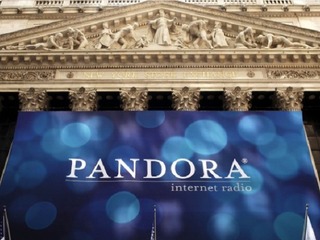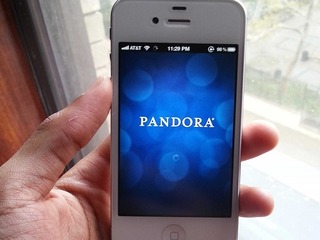Digital health funding declines for the third year in a row
AI-enabled digital health startups raised $3.7B, 37% of total funding for the sector
Read more...
Back when I wrote about Pandora for Vator's "What's Your Business Model?" series, I had to question the company's long-term viability. The majority of its funding was coming from advertising, but it was paying such high royalty costs, which increased the price of every song is played, that it had more money going out than coming in.
The answer to that was one of two things: either raise advertising rates, and risk driving off its main source of revenue, or increase the amount it was getting from its subscription plan. The company has obviously chosen the second option.
Pandora has launched a pretty smart way to pull in even more users to its Pandora One subscription plan: give them a cheaper way to sample the product. On Tuesday, the company announced the launch of the One Day Pass. Basically it gives users all access to Pandora One, including ad-free radio, all for 99 cents.
Starting on September 10, all users have to do to access it is go to settings, choose Pandora One, and then select Day Pass.
This is a move that makes sense for a variety of reasons. First of all, for someone who is only going to use the service for one or two days a month, it makes more sense for them to pay the 99 cents a day rather than the $4.99 monthly rate. That means that Pandora will be getting extra money from users who are not interested in signing up, but who might want to have ad-free radio for a party or get together.
The other reason this makes sense is that, as I said earlier, the best way to draw people in is to show them what they are missing. Are the ads on Pandora that bad to deal with? Honestly, no. But the company has to be hoping that, once a user experiences the ad free option, they will not want to go back to the free service.
Though revenue from its subscriptions has been increasing, it has not been growing as a percentage of the company's total revenue. In the full year 2014, Pandora took in $188 million from its subscription business, up from $116 in 2013, an increase of 38%, while advertising revenue was $732.3 million, a 40% year-over-year increase from $521 million in 2013.
In the second quarter of 2015, subscription revenue was $54.6 million, a 31% year-to-year increase, compared to $230.9 million for advertising, a 30% year-to-year increase.
Getting more people to pay for their music might help the company offset its crippling royalty costs.
The problem for Pandora is that the more songs that listeners access, the more ads Pandora will sell, and the more money the company will get. That obviously works in Pandora's favor, and allows them to offer the service to its users for free.
But, at the same time, the more songs that users play, the more Pandora has to pay out in royalty fees. And that is causing the company major headaches.
Pandora wound up with a $40 million net loss in 2014, up from $30 million in 2013. For Q2 2015 net loss was $15 million, up from $11 million the same quarter the year prior. The vast majority of all of that is going to "content acquisition costs," or the price of actually being able to stream all of that music. That number is increasing every year.
Pandota has fought to keep royalty payments down, and has had the courts rule in its favor against the American Society of Composers, Authors and Publishers (Ascap), as well and Broadcast Music Inc. (BMI), each of whom represent hundreds of thousands of songwriters, composers and publishers.
However the Justice Department didn't seem too keen on the company doing this, and has threatened to step in.
The fact that Pandora is now encouraging more people to shell out money for ad-free music, meaning that the company would not have its revenue depending on how many songs users actually listen to each month, as long as they still pay, may be an indication that, long-term, a free music service is simply unsustainable.
(Image source: blog.pandora.com)
AI-enabled digital health startups raised $3.7B, 37% of total funding for the sector
Read more...OXcan combines proteomics and artificial intelligence for early detection
Read more...Nearly $265B in claims are denied every year because of the way they're coded
Read more...Startup/Business
Joined Vator on
Pandora, the leading internet radio service, gives people music they love
anytime, anywhere, through a wide variety of connected devices: laptop and
desktop computers, smartphones, connected BluRay players, connected TVs,
etc. Personalized stations launch instantly with the input of a single “seed” –
a favorite artist, song or genre. The Music Genome Project®, a deeply
detailed, hand-built musical taxonomy, powers the personalization or
Pandora. Using this musicological “DNA” and constant listener feedback
Pandora crafts personalized stations from the more than 800,000 songs that
have been analyzed since the project began in January 2000.
More than 75 million people throughout the United States listen to
personalized radio stations for free on Pandora through their PCs, mobile
phones and devices such as the iPad, and connected in-house devices
ranging from TVs to set-top boxes to Blu-Ray players. Mobile technology has
been a significant factor in the growth and popularity of Pandora, starting
with the introduction of the Apple app store for the iPhone in the summer of
2008. Pandora instantly became one of the most top downloaded apps and
today, according to Nielsen, is one of the top five most popular apps across
all smartphone platforms.
Pandora is free, simple and, thanks to connectivity, available everywhere
consumers are – at the office, at home, in the car and all points in between.
In 2009 the Company announced that Pandora would be incorporated into
the dashboard in Ford cars via SYNC technology; GM has already followed in
announcing plans to integrate Pandora into its vehicles and Mercedes-Benz
introduced their Media Interface Plus device that works with the
free Pandora iPhone app to provide direct control of Pandora from in-dash
stereo controls. This was all great news for the millions of Pandora listeners
who had been plugging their smartphones into car dashboards to listen to
personalized stations while driving. More than 50 percent of radio listening
happens in the car, making it a crucial arena for Pandora.
Today tens of millions of people have a deeply personal connection with
Pandora based on the delight of personalized radio listening and discovery.
These highly engaged listeners reinforce the value Pandora provides to: 1)
musicians, who have found in Pandora a level playing field on which their
music has a greater chance of being played than ever before; 2) advertisers,
who benefit from the multi-platform reach of Pandora, as well as its best
practices in targeting consumers for specific campaigns; 3) the music
industry, which has found in Pandora a highly effective distribution channel;
and 4) automobile and consumer electronics device manufacturers, who have
noted that incorporating Pandora into their product makes it more valuable
to consumers.
Pandora continues to focus on its business in the United States. The radio
arena has never been hotter, thanks to technology that enables radio to be
personalized to the individual and more accessible than ever before. Right
now millions of people listen to Pandora in the United States and we hope
someday to bring Pandora to billions of people around the world.
Timeline:
• 2000 – Tim Westergren’s Music Genome Project begins.
• 2005 – Pandora launches on the web.
• 2008 – Pandora app becomes one of the most consistently downloaded
apps in the Apple store.
• 2009 – Ford announces Pandora will be incorporated into car
dashboard. Alpine and Pioneer begin selling aftermarket radios that
connect to consumers’ iPhones and puts the control and command of
Pandora into the car dashboard.
• 2010 – Pandora is present on more than 200 connected consumer
electronics devices ranging from smartphones to TVs to set-top boxes
to Blu-ray players and is able to stream visual, audio, and interactive
advertising to computers, smartphones, iPads, and in-home connected
devices.

